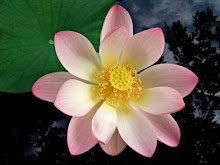Medicinal mushrooms
From Wikipedia, the free encyclopedia
Many species of medicinal mushrooms have been used in folk medicine for thousands of years. The use of medicinal mushrooms in folk medicine, is best documented in the East. Medicinal mushrooms are now the subject of study for many ethnobotanists and medical researchers. The ability of some mushrooms to inhibit tumor growth and enhance aspects of the immune system has been a subject of research for approximately 50 years.[1] In the span of this time, preclinical studies have shown 200 species of mushrooms that demonstrated the ability to markedly inhibit the growth of different kinds of tumors,[2] however dosage and effects on humans is mostly unknown. More extensive information regarding the toxicology of some medicinal mushrooms is also needed.
International mushroom research continues today, with a focus on mushroom's that may have hypoglycemic activity, anti-cancer activity, anti-pathogenic activity, and immune system enhancing activity. Recent research has found that the oyster mushroom naturally contains the cholesterol drug lovastatin,[3] mushrooms produce large amounts of vitamin D when exposed to UV light,[4] and that certain fungi may be a future source of taxol.[5] In the past, research conducted with fungi has led to the discovery of penicillin, lovastatin, ciclosporin, griseofulvin, cephalosporin, and ergometrine.
Contents
[hide]- 1 History
- 2 Medicinal properties
- 3 Species
- 3.1 Ganoderma lucidum and Ganoderma tsugae (Reishi/Lingzhi)
- 3.2 Trametes versicolor (Coriolus versicolor)
- 3.3 Grifola frondosa (Maitake)
- 3.4 Agaricus subrufescens (Agaricus blazei)
- 3.5 Pleurotus ostreatus (Oyster mushroom)
- 3.6 Agaricus bisporus (Common mushroom)
- 3.7 Lentinula edodes (Shiitake)
- 3.8 Hericium erinaceus
- 3.9 Flammulina velutipes (Enokitake)
- 3.10 Inonotus obliquus (Chaga mushroom)
- 3.11 Sparassis crispa
- 3.12 Pleurotus eryngii
- 3.13 Piptoporus betulinus
- 3.14 Agrocybe aegerita
- 3.15 Fomes fomentarius
- 3.16 Cordyceps
- 3.17 Phellinus linteus


Tidak ada komentar:
Posting Komentar